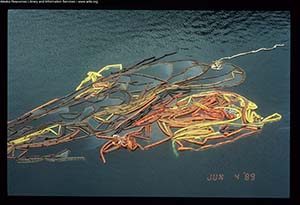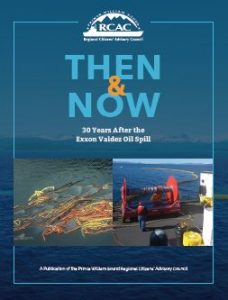Resolution 19-01:
Recognizing the 30th anniversary of the Exxon Valdez oil spill, supporting high standards and safeguards for the Valdez Marine Terminal and associated tankers, and continued work to create the best response system possible should prevention measures fail

Whereas, on March 24, 1989, the Exxon Valdez ran aground on Bligh Reef and spilled an estimated 11 million gallons of crude oil and oiling some 1,300 miles of Alaska coastline;
Whereas, March 24, 2019, marks 30 years since this disaster;
Whereas, Congress determined that complacency on the part of industry and government was a contributing factor in the accident and mandated citizen involvement in the oversight of crude oil terminals and tankers;
Whereas, the Prince William Sound Regional Citizens’ Advisory Council, an independent non-profit corporation whose mission, as mandated by the Oil Pollution Act of 1990, is to promote environmentally safe operation of the Valdez Marine Terminal and associated tankers;
Whereas, the Council represents communities, commercial fishing, aquaculture, Alaska Native, recreation, tourism, and environmental organizations in the region adversely impacted by the 1989 Exxon Valdez oil spill;
